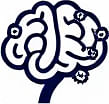Wellness Integration as a Mental Model
 by Verner Mayer
by Verner Mayer
Wellness integration uses mental models to blend health practices into everyday routines, improving cognitive growth and life balance. This method supports professionals in fostering resilience and clear thinking through simple, effective strategies.
Wellness integration offers a way to weave health practices into daily life. By focusing on mental models, individuals can create routines that support overall well-being.
The Basics of Mental Models
Mental models serve as cognitive tools that shape how people think and act. These frameworks help in organizing thoughts and making decisions. For example, mental models allow for better problem-solving in various situations.
In practice, they provide structure for complex ideas. One key aspect is how these models adapt to personal needs. This adaptability makes them useful for many areas of life.
Applying Mental Models to Wellness
Wellness integration involves combining physical, emotional, and mental health elements. Through mental models, people can build habits that promote balance. A simple model might include setting clear goals for daily activities.
This approach emphasizes consistency over intensity. wellness integration becomes a core part of routines when linked to these models. For instance, pairing exercise with work breaks can enhance focus.
Professionals often use this in their schedules. By viewing health as interconnected, they maintain energy levels. The result is improved performance in tasks.
Practical Steps for Implementation
To start, identify areas where wellness fits into daily patterns. Begin with small changes, like adding mindfulness moments. Mental models guide this process by offering a clear path forward.
Lists can aid in tracking progress. For example:
- Choose one health focus each week.
- Track changes in mood and energy.
- Adjust based on outcomes.
In business settings, leaders apply similar strategies. They encourage team wellness to boost productivity. This creates a supportive environment for growth.
Cognitive development benefits from these practices. Regular integration strengthens brain function over time. Studies show links between health routines and better memory.
Benefits in Psychology and Daily Life
Psychology highlights how mental models aid in emotional regulation. cognitive development occurs as individuals learn to manage stress. Wellness integration supports this by promoting positive habits.
In everyday scenarios, it leads to greater satisfaction. People report higher levels of happiness when routines include health elements. This method also aids in long-term planning.
For lifelong learners, integrating wellness means continuous improvement. They use models to explore new ideas while maintaining health. The outcome is a more fulfilling experience.
Business strategies incorporate these elements too. Companies that prioritize employee well-being see better results. Teams perform well when wellness is part of the culture.
Real-World Examples
Consider a professional facing high demands. By using a mental model for wellness, they schedule rest periods. This prevents burnout and maintains efficiency.
Another example is in education, where students apply models to study routines. Including breaks for physical activity improves retention. business strategies in organizations mirror this by integrating wellness programs.
Over time, these practices lead to lasting change. Individuals find that small, consistent efforts build into significant improvements. The key is persistence and reflection.
Final Thoughts
Wellness integration through mental models provides a practical framework for better living. It empowers curious minds to achieve balance and growth. By adopting these approaches, anyone can enhance their daily experience and cognitive abilities.
